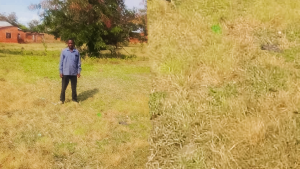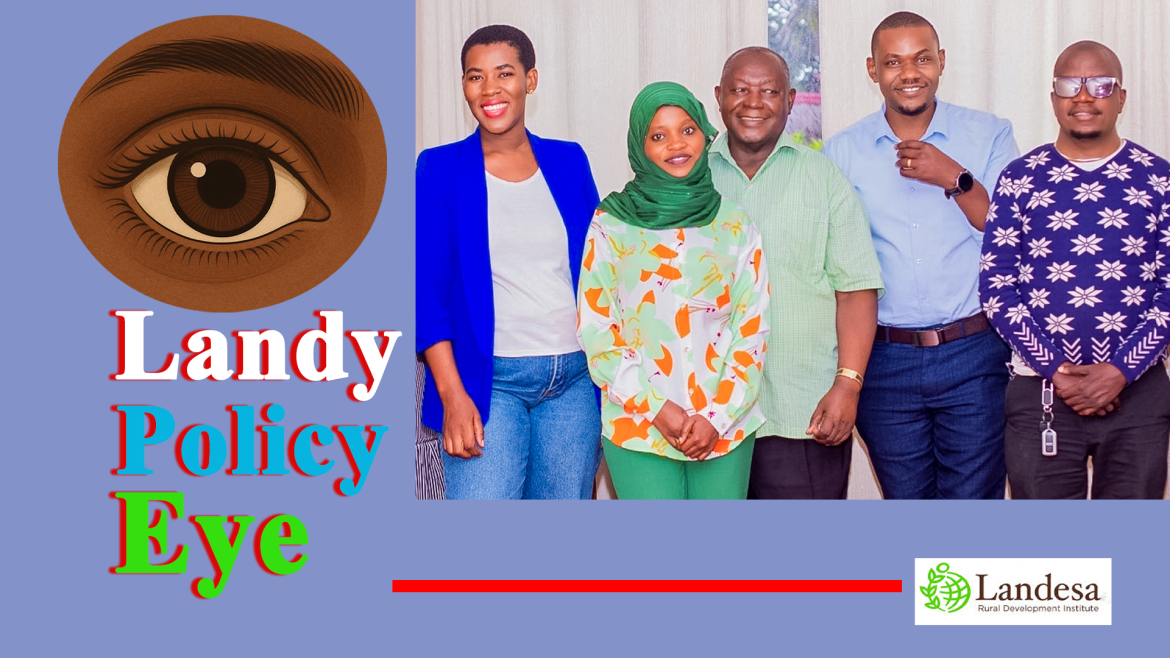By Hamad Rashid
Village Land Use Planning (VLUP) in Tanzania remains a vital foundation for sustainable development, improved natural resource management, and the reduction of land-related conflicts. These plans guide how village land should be used for agriculture, housing, grazing, and environmental conservation. However, implementation has been sluggish, marred by limited funding and institutional constraints.
In chapter three National Land Policy (2023 editions) says, “A total of 48 out of 139 districts have prepared land use plans. Similarly, 2,944 villages out of 12,318 villages in the country have land use plans. The slow pace of preparation of district and village land use plans has been caused by lack of resources, planning authorities not allocating funds for the preparation of plans and limited participation of the private sector and various stakeholders in preparing land use plans. Similarly, the slow pace has been due to the lack of a specific coordination and stakeholder involvement system.
According to the President’s Office – Regional Administration and Local Government (TAMISEMI), by 2020 Tanzania Mainland had a total of 12,318 villages, yet less than 23% had approved land use plans. The 2023 edition of the National Land Policy acknowledges that the goal for sustainable land use was not fully implemented due to lack of resources to facilitate the preparation and execution of land use plans.
Landesa (non-governmental organization) has made a significant contribution in providing land tenure education and helping citizens obtain land tenure rights in villages while supporting participatory and integrated village land use plans. A total of 115 villages have been reached by Landesa throughout the country as of the year 2025.
Landesa’s Voice in the Policy Conversation
The non-governmental organization Landesa has continued to engage stakeholders in discussions around the revised National Land Policy (2023). In a recent session held with journalists, Landesa analyzed the new policy’s provisions, especially those linked to land governance and formalization.

Masalu Luhula, Landesa, with some journalists during the National Land Policy discussion in June Bagamoyo
The Policy Speaks – But is It Being Heard!
The 2023 edition of the National Land Policy, building on its 1995 predecessor, points to systemic failures. It acknowledges that “the goal of sustainable land use was not fully implemented due to a lack of resources to facilitate the preparation and execution of land use plans.”
This lack of resources leaves a gap for the NLUPC to leave room for informal settlements to expand in unsurveyed areas, fueling further land insecurity, especially in regions like Morogoro.
Inside Morogoro: A Snapshot of Uneven Progress
According to the National Land Use Planning Commission (NLUPC) Eastern Zone Office, by the end of 2025, the Morogoro Region will have 591 villages. Yet only 326 villages currently have land use plans.
Breakdown by district (Land Use Plans in brackets):
Morogoro DC: 149 villages (75 planned)
Kilosa: 138 villages (58 planned)
Mvomero: 101 villages (80 planned)
Malinyi: 32 villages (17 planned)
Ulanga: 59 villages (43 planned)
Mlimba: 62 villages (49 planned)
Gairo: 50 villages (only 4 planned)
A major obstacle, the Commission notes, is a severe budget shortfall, limiting its ability to reach all villages with adequate planning and surveying support.
Legal Expert Raises Concerns
“Political interests have clouded the urgency of preparing land use plans,” said Emmanuel Kimaro, an independent land advocate. “The Commission lacks a sustainable budget to complete this vital national task, despite its clear mandate in the Land Use Planning Act, 2007.
He emphasized the need for increased domestic funding, especially for the NLUPC and VLUPs, if land development is to serve the people effectively.
Policy Knowledge Gap Among Villagers
Public understanding of the National Land Policy remains alarmingly low, especially in rural communities. In Mvomero District, residents interviewed expressed little to no knowledge of the land use planning process.
“I know there’s a Land Policy and even a law, but I don’t know what the 2023 Policy says about preparing land use plans,” said Elizabeth Tomas, the only respondent who had even heard of the policy.
Others, including Ramadhani Sombida, Christina Edward, and Is’haka Rajab, were unfamiliar with the policy or the VLUP process altogether.
Magogoni Village: A Glimpse of Success
One success story is Magogoni Village, located in Selembala Ward, Morogoro District. In June 2024, the village received a formal zoning plan through the Land Use Planning Commission.
“Our land value has increased. Before, we didn’t even know where to bury or where to build. Now, we’ve been guided,” said Athumani Omari, the village chairman and beneficiary of the plan.
Still, Chairman Omari emphasized the challenges the Commission faces:
“There are too many people, and everyone needs land surveyed for homes, livestock, or public services. The Commission can’t cope with the demand.”

Magogoni Village Chairman Athumani Omari on his planned land
Needs to Be Done
Advocate Emmanuel Kimaro recommends several key solutions:
- Increase unconditional domestic funding for the NLUPC and VLUP programs
- Enhance village-level training on land surveying
- Ensure strong participation from farming and pastoralist communities
- Empower NGOs to support land titling efforts through community education and technical support.

Land Advocate Emmanuel Kimaro
A Senior Journalist experienced in land matters, Deodatus Mfugale, adds one of the solutions to achieve land use planning for villages in the area. “I would also highlight that, the need for district councils to raise the budget for land use plans. It is important that the guidelines set a specific budget and number for the Council to prepare land use plans for its villages.
However, National Land Policy (2023) sets new goals, the government, civil society, and communities must work together to turn promises into tangible outcomes.

